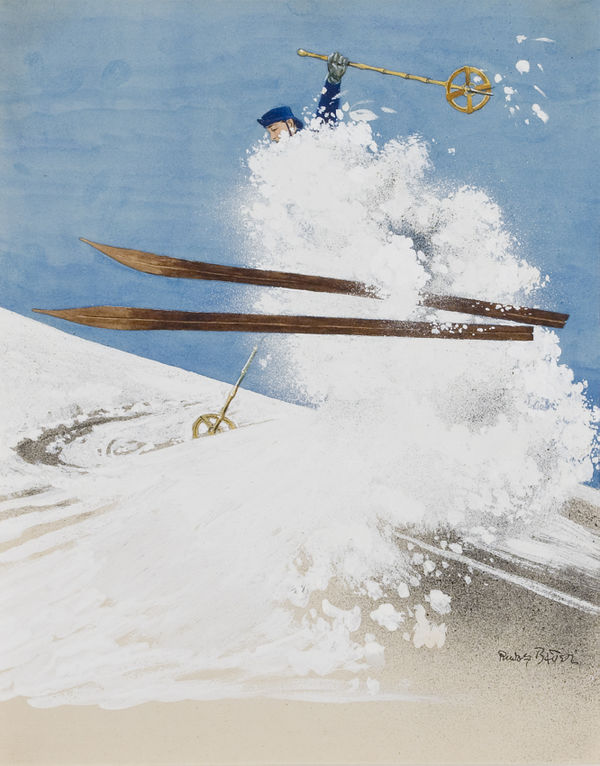Rudolf Bauer
(German, 1889-1953)
Once regarded as the 'King of Non-Objective Art,' Rudolf Bauer was unjustly excluded from art history due to personal vendettas and has only recently been re-acknowledged for his role in the popularisation of abstract art. Non-Objective art, as its name suggests, is non-figurative. Bauer's works present a lyrical abstraction of geometric forms that evoke a hidden mysticism.
His early expressionistic works—in which he experimented with Cubism, Futurism, and Constructivism—garnered the attentions of Herwarth Walden, the founder of the Galerie Der Sturm in Berlin, who went on to host three solo shows of Bauer's work. With Walden's support, Bauer became involved with the avant-garde group Der Sturm, where he began exhibiting frequently with other members like Marc Chagall, Paul Klee and Wassily Kandinsky, teaching in Walden's Sturmschule and writing for their magazine. Bauer's collaborative period with Der Sturm resulted in a period of stylistic transformation for the artist, whose works transformed from the more expressive pieces of the early 1920s to works of lyrical abstraction. By 1925, his work was entirely consumed by the geometric abstract style that he is known for today.
Through Dur Sterm, Bauer met Hilla Rebay who championed him as the leading non-objective artist of his time and introduced Bauer to Solomon Guggenheim in 1929. Guggenheim recognised Bauer's talent and purchased 300 of his works. With the revenue from the sale, Bauer established a salon in Berlin. Shortly thereafter, many of his works were included in the exhibition of degenerate art, sponsored by the Nazi Regime, and he was briefly incarcerated by the regime until he was released as a result of the efforts by Guggenheim and Rebay's brother.
In 1939, he moved to the United States where his work had been growing increasingly popular through his association with the Société Anonyme. Hilla Rebay became his agent, who was also the Guggenheim Museum's founding director at the time. Bauer's work became central in the creation of the Guggenheim's collection at the Museum of Non-Objective Painting. However, due to a falling-out over Rebay advising Bauer to sign a contract ensuring all of his current works and future paintings would go to Guggenheim's collection, Bauer prematurely stopped painting. Following his death in 1953, decedents of Guggenheim removed Bauer's work from the collection altogether. Since few of his works were held outside of the collection, Bauer's work remained hidden from the public until the 1990s.

